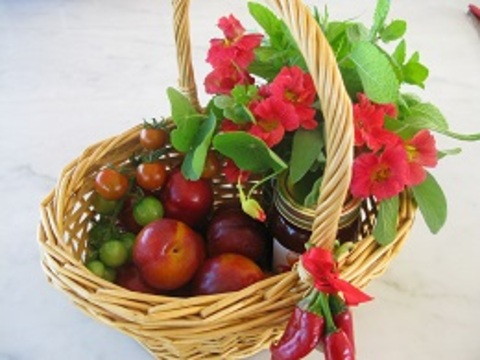6 March 2014
THINKING ABOUT EATING LOCAL

Choosing to eat fresh, locally grown food that’s in season is the incontestable mantra of every thoughtful food lover. Fresh fruit and vegetables are at their most nutritious when harvested, while our local artisan food producers need every bit of recognition they can attract if they are to develop into viable profitable ventures. We’re a nation of small businesses that need local support.
But we’re also a nation where the food and beverage producers are responsible for well over 50% of our international export earnings. Australia, too, exports more than 50% of the food it produces and no doubt while not quite as reliant on that for their economy to work, it makes a significant contribution. So the brouhaha that has erupted when the two supermarket chains across the ditch (one of which, Woolworths, owns the subsidiary Progressive enterprises here) decided to start a campaign over stocking local produce and only purchasing using local foods for their home brands has had a much further reaching result than they ever imagined. A literal can of worms has been opened, many Kiwis are boycotting their supermarkets here and we’re learning far more about supermarketing practices than we ever dreamed of - things the chains probably never envisaged.
While it is easy to preach ‘buy local,’ we need to take a step back and think about the long term consequences of that. Neither New Zealand or Australia can be completely dogmatic about ignoring imported food as that is a hypocritical reaction. We should never forget the backbone of our country’s economy is the dairy industry, and our sheep and beef farmers are significant contributors too. But we live in a world where the global economy has long dictated international food production and distribution. We all enjoy internationally grown treats such as coffee, chocolate, and a host of other imported foods. We’d be devastated, and probably hungry, if we were limited to a diet solely composed of local food. Continue to eat the seasonal, fresh, locally produced food as the first choice for the household but do spare a thought for the farmers of other countries who rely on our support too.
The Australian rice industry is a fine example. Their brand SunRice has grown to be a major player on the international market, supplying rice to more than 60 countries. Apart from products available through a few small specialist rice importers, almost all the rice found on our supermarket shelves is grown in Australia. Following the ten year drought of the last decade, the rice growers are now in full production with 11 varieties of rice planted and harvested each year. Most of us are familiar with long grain and short grain white and brown rice, but red, black and Japanese rice varieties make an interesting and tasty alternative.
I will post two exciting recipes in the RECIPE section.